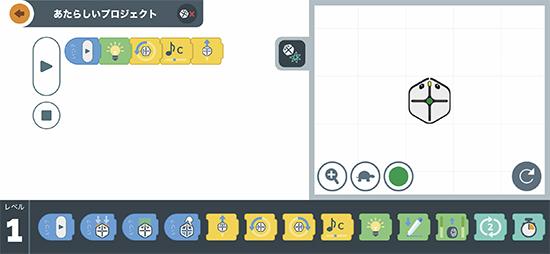OK even for programming beginners! Let's move a small roomba with iRobot's "Root"
Hearing this alone, it sounds like a toy for children, but I am no different from a child who has lived for over 30 years and has never touched programming. Therefore, it can be said that it is suitable for introduction of adults who do not have knowledge of programming. Therefore, this time, the author, who is a programming amateur, decided to play with Root.
Appearance Customization Makes You Feel Attached
Root is a robot with a hexagonal design that emphasizes black and white. The main body size is width 13.4 x depth 14.9 x height 4.5 cm, and the weight is about 0.49 kg. It's a design that looks like a small rumba, and it's kind of attached. What's even more impressive is that you can scribble on the white part of the main unit with a whiteboard marker. You can also stick the sticker that comes with the package. At first glance, it looks like a toy, but it is actually a highly functional robot equipped with a drawing function, music playback function, color sensor, light sensor, touch sensor, and LED sensor. It has a built-in magnet, so you can attach it to a whiteboard and run it.Programmable by drag and drop
The biggest feature of Root is that it can be programmed on the smartphone app "iRobot Coding" or a web browser. The app is distributed on both iOS and Android OS, so you should start here first. After launching the app, create a new project. There are programming levels from 1 to 3. At level 1, all you have to do is connect blocks related to operations, and Root will operate according to the instructions. Basically, it is supposed to be moved on the attached folding whiteboard, and each block is assigned a movement such as advancing one square, turning left, turning right, and making a sound. Since it is just a matter of freely combining these, even small children can use it. Programming with this “drag and drop” was smooth even for the author, who was trying programming for the first time. However, it was necessary to confirm on the web what kind of operations can be performed in each block in advance, and it was like learning what could be done while operating. If you pair the main unit and smartphone with Bluetooth, Root can execute the programming you made yourself. One of the features of this connection method is that it is simple and easy to understand.You can also program in Python if you get used to it
After you get used to level 1, move on to level 2. When programming created at level 1 is switched to level 2, it is displayed in a format closer to the programming structure. Here you can also set detailed numerical values such as the distance to move and the angle to rotate. I think it takes a little getting used to, but since it can be done in Japanese, even the author was able to program with a little effort. When I switched to level 3, I got the impression that I needed a fairly full-fledged programming knowledge. Nonetheless, since I've gone through levels 1 and 2 so far, even if I'm a novice writer, even if I can somehow understand what each code means, it may be a big progress. For a beginner like me, working hard at Level 2 was a challenge, but even if you don't have programming experience, it's fun to be able to move a robot with your own hands, and programming that allows you to do more complicated movements. I wanted to try it. One thing that confused me a little about using Root this time was that I didn't know what kind of goals to set. However, this problem can be solved by referring to examples of introduction in educational settings and learning contents on the official website "iRobot Education". I felt it would be easier to learn if this was built into the app. Root can be learned programming only with a smartphone or tablet, but it seems better to have a PC for more advanced learning. As I mentioned at the beginning, I would like to recommend it not only to teach children the fun of programming, but also to adults who are thinking about starting programming. (TEKIKAKU, Ayami Imanishi)
